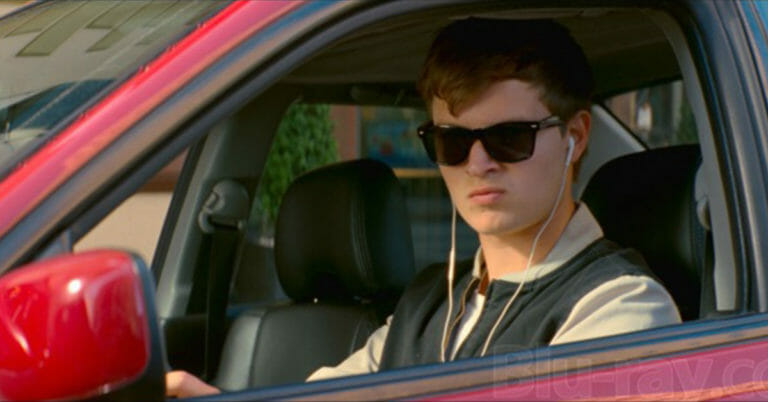By Shanee Edwards · December 3, 2018

As writers, it’s easy to rely on dialogue to tell the story. But often scripts include a lot more dialogue than is truly necessary. Really great screenwriters know that less dialogue with more subtext makes for the most powerful films.
When the film industry first began in the 1890s, there was no dialogue at all because the technology to synch sound with film hadn’t been invented, creating what we now call the silent film era. Yes, there were title cards that spelled out what exactly was happening and sometimes what the character was saying, but the first filmmakers relied heavily on the actors’ faces and gestures. The same way a picture says a thousand words, a good actor’s face can reveal story through emotion.
The recent film A Quiet Place, written by Bryan Woods, Scott Beck and John Krasinski, has its entire premise built on telling a story with no dialogue. The screenplay is a lean 68 pages and it’s really fun to read.
Here are our top ten movie scenes with nearly zero dialogue.
This scene could easily have had dialogue between Baby (Ansel Elgort) and the other thieves. But the success of their heist relies on keeping people’s identities secret so it makes more sense that not only do they not speak to each other, no one knows anyone’s real name. The music and the way Baby goes from stoic to animated tells the audience exactly who he is and the thrill ride they are about to go on.
The scene is sheer terror. Clarice (Jody Foster) is in pitch black but Jame Gumb (Ted Levine) is wearing infrared goggles and hunts her in the darkness. She can’t see anything but knows her life is on the line and could end at any second. She has no idea he’s so close to her, he can just reach out and touch her! This scene sure does get the blood pumping.
There’s a great moment in this scene when Hugh (Leonardo DiCaprio) hears a rustling in the bushes. He looks to find two adorable bear cubs playing. But his relief quickly turns to terror when the mother bear attacks him. And attacks him. And attacks him. The bear is relentless and sets the rest of the story in motion.
The Chopin ballad is the dialogue in this scene. On the edge of death, Wladyslaw Szpilman (Adrien Brody) begs for his dignity so that he might be allowed to live. The scene has such intense emotion that there’s no way to put them into words. The horror of the Holocaust cannot be accurately described in any words, but watching a broken, dying man play this soul-stirring music is the true definition of humanity.
Roger Thornhill (Cary Grant) gets off the bus in what appears to be the middle of nowhere. When the plane flies too close for Roger’s comfort, he’s afraid but assumes it’s an accident or the pilot didn’t see him. When the plane comes at him a second time, he knows it’s game-on. What separates this scene from just any ordinary action scene, is that we see Roger evolve before our very eyes. He goes from being passive to incredibly active within just a couple of minutes. As the audience watching, we start to believe Roger may just be smart enough to survive whatever ordeal he is facing.
Daniel Plainview’s (Daniel Day-Lewis) journey begins alone. This is crucial because it shows a great example of American individualism – one of the film’s main themes. There are no institutions or governments interfering with him, so it makes sense that we meet him alone and without dialogue. In this scene, we learn that Daniel is hard working, persistent, and self-reliant.
To save her country and herself, Queen Elizabeth (Cate Blanchett) must undergo a grand transformation. It’s a man’s world and she knows if she marries, she’ll give up all her power. She let’s go of her youth, her dreams, prospects of motherhood, and her very identity to become one of the greatest monarchs of all time.
When I first saw this film, I had expected a happily ever after ending. I was devastated when Ben Braddock’s (Dustin Hoffman) face went from joy to what looks like regret, possibly even fear. It was like a kick in the gut. Even if the writer wanted to add dialogue to the scene, it’s nearly impossible to imagine what Ben might say.
Evolution. Rebirth. Higher consciousness. Whatever the Star Baby means to you, there’s no denying this scene contains some of the most powerful images ever put on film. It’s been fifty years since the film was made and it still feels as provocative and mind-blowing as when it first came out.
The tension is so thick in this scene you can cut it with a knife. Clint Eastwood’s rugged scowl helps too. Though the three men are standing in the middle of the desert, it begins to feel claustrophobic, especially in the close-ups of the men’s eyes. Death isn’t always a verbal discussion. Sometimes, it’s just a look. Many people think this is some of the best filmmaking of all time.